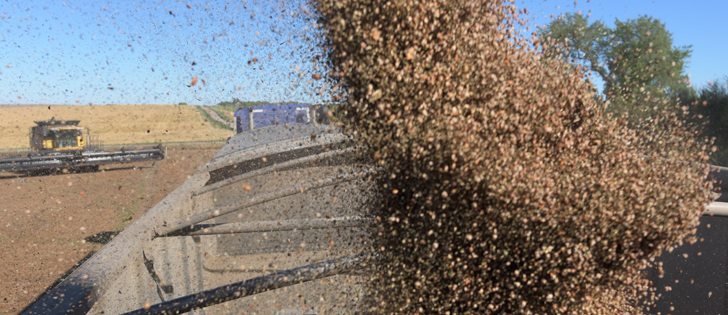Pulse exporters are breathing a sigh of relief after India granted a last-minute extension to a phytosanitary policy waiver.
India has a blanket requirement that all pulse imports must be fumigated to ensure there is no presence of certain quarantine pests.
The policy states that fumigation has to occur at origin. However, India has provided a waiver to certain countries, including Canada, allowing exporters to fumigate shipments at destination in India.
“It’s too cold for methyl bromide fumigation to be done effectively (in Canada),” said Gord Kurbis, director of market access and trade with Pulse Canada.
Read Also

Ostrich farm case shows power of social media
The social media circus surrounding the BC ostrich farm, could happen again in Canada, says communication expert
The waiver has been in place since 2004. Canada has been regularly receiving six-month extensions to the waiver since that time.
Canada typically receives notification three to four weeks ahead of time that the waiver is going to be extended.
That didn’t happen with the latest Sept. 30 deadline: Kurbis still hadn’t heard anything when he went to bed Sept. 28.
Exporters were extremely nervous because some of them had shipments of peas and lentils on the way to India, which could be rejected because they hadn’t been fumigated in Canada.
Exporters feared Indian importers were going to use the phytosanitary policy to back out of unfavourable contracts.
Many Indian importers signed contracts in the winter when pulse prices were sky-high. They have since fallen precipitously.
Pulse Canada was aware that might happen and took steps to ensure it wouldn’t.
“This year, because of the price inverse, we were especially thorough in working with the Canadian High Commission in New Delhi and with the CFIA (Canadian Food Inspection Agency) to make sure all the i’s were dotted and t’s crossed,” said Kurbis.
“We didn’t want there to be any prospect of a technical phytosanitary reason that could cause shipments to be rejected where price levels could be of some concern.”
However, it wasn’t until he woke up on the morning of Sept. 29 that Kurbis received word from the High Commission that the waiver had been extended.
“This is an unacceptably long delay,” he said.
Pulse Canada wants plant protection agencies in Canada and India to work out the technical issues well before the next extension deadline on March 31, 2017.
They need to consider the practicalities of trade because a boat arriving in India Oct. 1 would have been loaded in Canada in August.
Exporters need the assurance their shipments won’t be rejected upon arrival in India.
Pulse Canada also wants the CFIA to start a new dialogue with India on whether fumigation is necessary at all.
The quarantine pests that India wants to keep out are stem and bulb nematodes. Kurbis said new imaging technology out of the University of Manitoba can detect whether those bugs are in a shipment before it sails.
Digvir Jayas, vice-president of research with the university, said they have successfully used the soft X-ray system to detect five or six different insect species in grain samples.
They have not searched for stem and bulb nematodes, but he doesn’t think that would be a problem.
“We should be able to detect (them) using the system we have developed,” he said.
The system can identify the bugs because they have a different density than grain kernels.
“If there is larva inside you can detect that very easily, just like you can see in the human body when there’s a crack in the bone,” said Jayas.
Another alternative would be to use infrared thermal imaging. The respiration of insects and resulting heat production are higher than that of the grain.
“A system could be designed very easily,” he said.
Jayas travels to India often and would be willing to show Indian officials how the system works and why it could be used in place of fumigation.
















